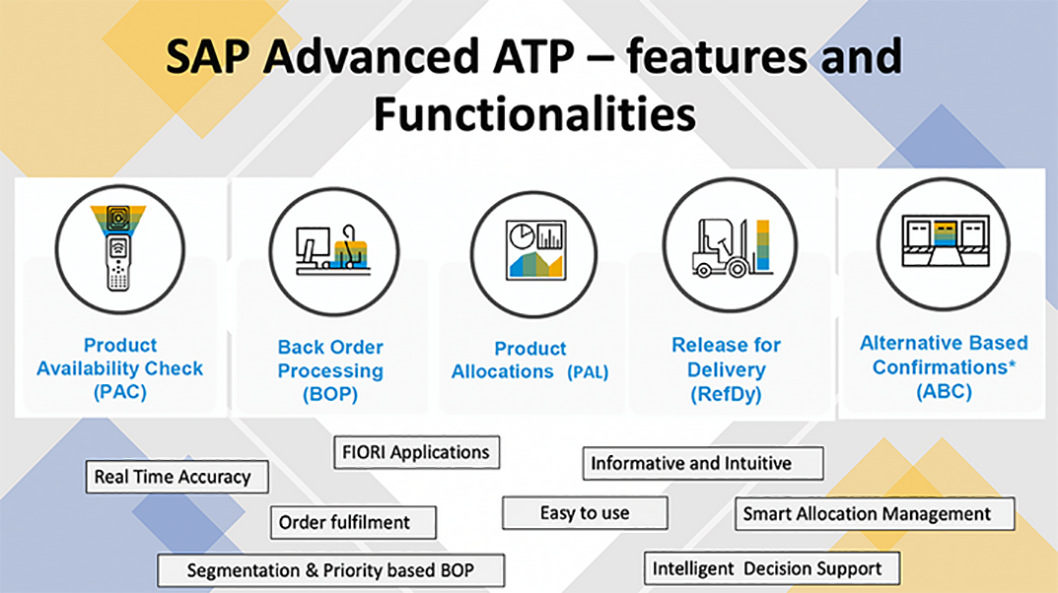Optimize Supply Chains with SAP aATP
The available-to-promise function ensures that companies can always cover their requirements using stock or material receipts. Besides continuing to offer the traditional availability check from SAP ERP, SAP S/4HANA now also offers the innovative business function Advanced Available-to-Promise (aATP).
Which Additional Features Offer Tangible Added Value?
For companies with complex logistics, SAP Advanced Available-to-Promise (SAP aATP) offers an extensive range of versatile added features:
• Product Availability Check (CA-ATP-PAC)
• Backorder Processing (CA-ATP-BOP)
• Central Functions (CA-ATP-CTL)
• Product Allocation (CA-ATP-PAL)
• Supply Protection (CA-ATP-SUP)
• Alternative-Based Confirmation (CA-ATP-ABC)
• Substitutions (CA-ATP-SUB)
• Object and Value Determination (CA-ATP-OVD)
• Supply Creation-Based Confirmation (CA-ATP-SBC)
• Availability Change Log (CA-ATP-ACL)
• Activity Attributes for Business Process Scheduling (CA-ATP-SCH-BPS)
Workshops and deployment analyses are used to identify which of the added features can offer you tangible added value.
How Does Object and Value Determination (CA-ATP-OVD) Support Material Availability in Transactional Business Documents?
The following sections contain two practical examples that show how SAP aATP can also make your inventory management more efficient.
Alternative-Based Confirmation (CA-ATP-ABC)
The Alternative-Based Confirmation (ABC) feature offered by aATP in SAP S/4HANA can be used to optimize the confirmation for a sales order requirement. You can use the method to determine possible alternatives when, for example, the availability of a product at a requested delivering plant is insufficient to confirm the original sales order requirement by the requested delivery date.
Sales order requirements consist of various attributes, including a requested product in a specific quantity, a requested delivering plant, and a requested delivery date. The ABC process analyzes these attributes and, if necessary, can replace the originally requested delivering plant, storage location, or product with an alternative.
The system uses a heuristic approach to calculate all possible alternatives (for example, a larger quantity or an earlier delivery date) automatically and identifies the most advantageous alternative when more than one option can fulfill a requirement equally.
The following scenario shows how ABC is used in practice: A customer has placed an order for a specific product, with a requested delivery date and requested delivering plant. However, a sufficient quantity of the product is not available at the requested delivering plant by the requested date. In this case, the ABC feature can propose alternative options that still meet the sales order requirement, such as delivery from another plant or delivery of a product that is similar to the one originally ordered.
![[Translate to Englisch:] [Translate to Englisch:]](/fileadmin/_processed_/2/6/csm_sap-aatp-bild_f7b8f4cd5e.jpg)
